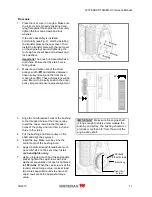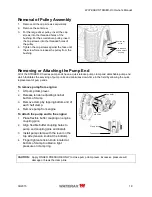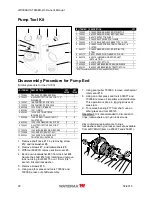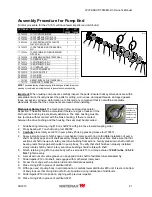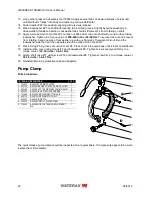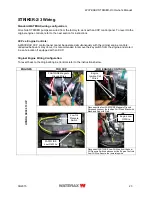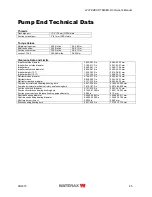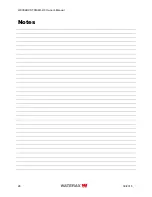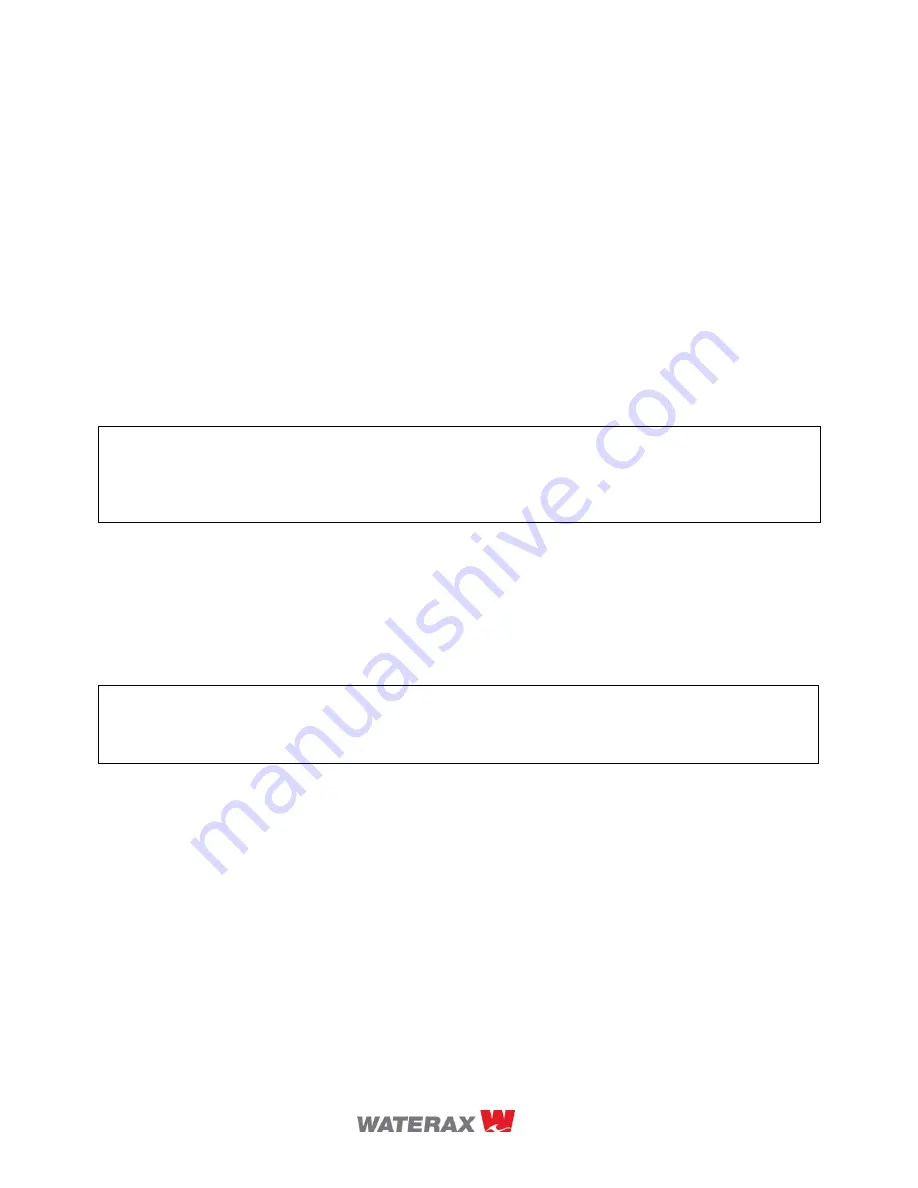
WATERAX
STRIKER-2/3 Owner's Manual
09/2015
11
Startup and Discharge
Discharge hoses should be installed before starting the engine and priming the pump.
1. Fill fuel tank with recommended fuel grade.
For models with an integral fuel tank, fill tank and securely replace cap.
2. Start the engine.
a. With all discharge valves closed, turn the on/off ignition key or switch to the “ON” position.
b. Open fuel valve.
c. Close/engage choke, if engine is cold.
d. Increase the throttle past the idle position.
e. Start the engine using the key switch or the start button. Hold until engine starts. DO NOT HOLD
for more than 5 seconds. If starting using the rewind starter, ensure that the key switch or ignition
switch is on the “ON” position. Give starter rope a quick and steady pull until engine starts.
f.
Open/disengage choke
g. Allow engine to warm up for a minimum of 2 minutes before using full throttle.
Note:
Leaving the pump running with all the discharge valves closed is called
deadheading
the
pump. The pump should not be left in this mode for more than a minute. Leaving in this
condition for any length of time will cause the pump to overheat and damage the pump.
To avoid overheating the pump, a re-circulation line (if provided) should be opened or a
discharge line left slightly open to allow fresh water to continue to enter the pump.
3. Discharge water.
Once the pump is primed, and with the engine running, you can begin to discharge water.
a. Slowly open the discharge valve. If pressure does not build in the discharge hose, the pump has
not been fully primed. The valve should be closed and the pump primed again.
b. Adjust the pump performance by throttling the engine up or down, or opening or closing discharge
valves at various positions, or any combination of the two.
Note:
If the engine throttle is increased and the engine RPM increases without an increase in
pump pressure, the pump may be cavitating. Refer to the limitations listed at the
beginning of this section, and see the troubleshooting section for a verification checklist
and possible solutions.
Shutdown
1. After completing the pump operation, gradually reduce the engine RPM and slowly
close the discharge valves (preferably in the order listed).
2. Whenever the unit has been run at full throttle for most of the operation, allow the
valves to remain slightly open and run the engine at idle for approximately 5 minutes
before shutting down the unit.
3. If the pump was last run with foam or water that is salty, brackish or high in mineral
content, flush the pump with fresh water for a minimum of 2 minutes or until the water
is clear.
4. Close off the hydrant or water supply to the pump.
5. Open all valves to relieve any pressure left in the system.



















